

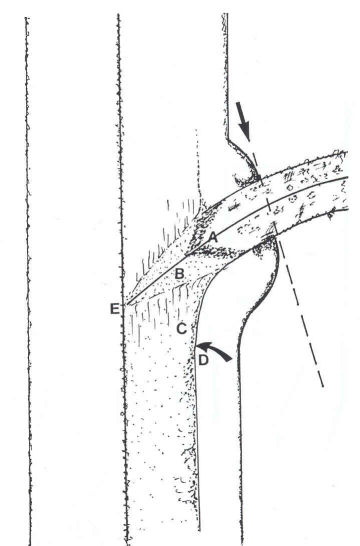
SYMPLASTLESS BRANCH, INSIDE VIEW
When symplastless branches are removed promptly, decay-causing fungi will be
resisted by the branch protection zone at position A. When the
symplastless branch persists or when the invading microorganisms are aggressive,
the corewood [B] of the branch may be infected. When symplastless branches
remain for a long time, and the infecting microorganisms are very aggressive,
the wood in the trunk present at the time of branch symplast death may be
infected [C]. Then a barrier zone [D] will separate the infected wood from the
sound wood that formed after the death of the symplast of the branch. It is not
well understood how C occurs and how D forms. The basic compartmented
structure of the tree may be the primary answer to the limitations of the
infection. If the pathogens are going to spread, it would be many-fold
easier for them to spread vertically than outward in a radial direction. E
is where the trunk pith and branch pith come close together but do not meet.
Diagram from Modern Arboriculture
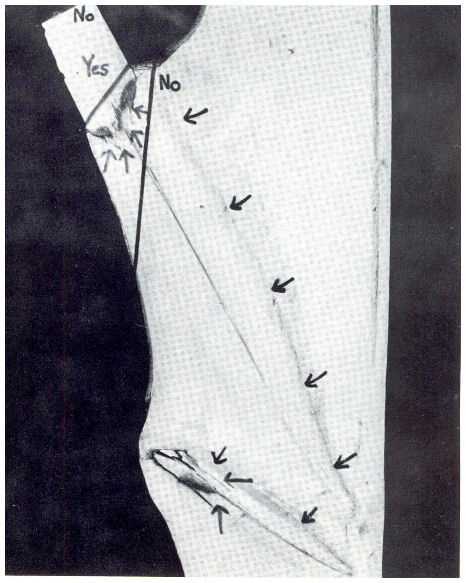
Left: Experiments on branch development and pruning on 12 species of trees for 8 years showed that trees form strong protection boundaries at the base of dying branches. Pruning cuts that remove the boundaries lead to rapid trunk decay. The photograph shows the proper cut (YES line). The arrows at the branch base show the branch protection zone. The arrows along the branch core show the compacted xylem. The arrows below about the small branch show the results of boundaries. that walled off the decayed stub.
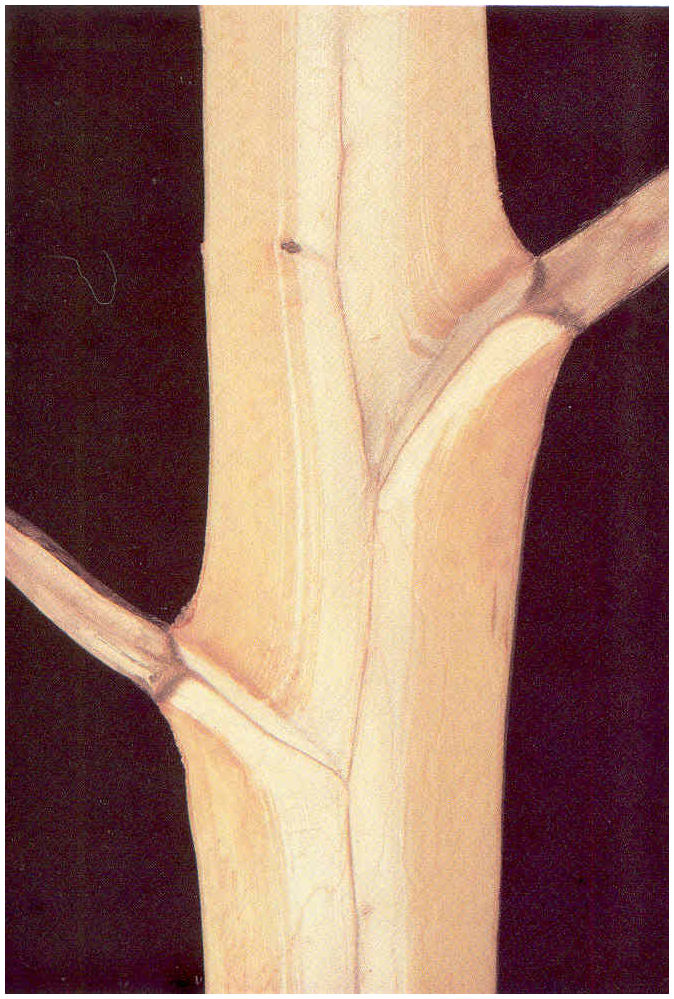 Protection
zones form within the bases of branches. The zones are made up of
chemicals that come from stored energy reserves - starch, oil- in living wood
cells. The zones resist spread of organisms from the branch into the
trunk. The chemicals are phenol-based in hardwoods and terpene-based in
conifers.
Protection
zones form within the bases of branches. The zones are made up of
chemicals that come from stored energy reserves - starch, oil- in living wood
cells. The zones resist spread of organisms from the branch into the
trunk. The chemicals are phenol-based in hardwoods and terpene-based in
conifers.
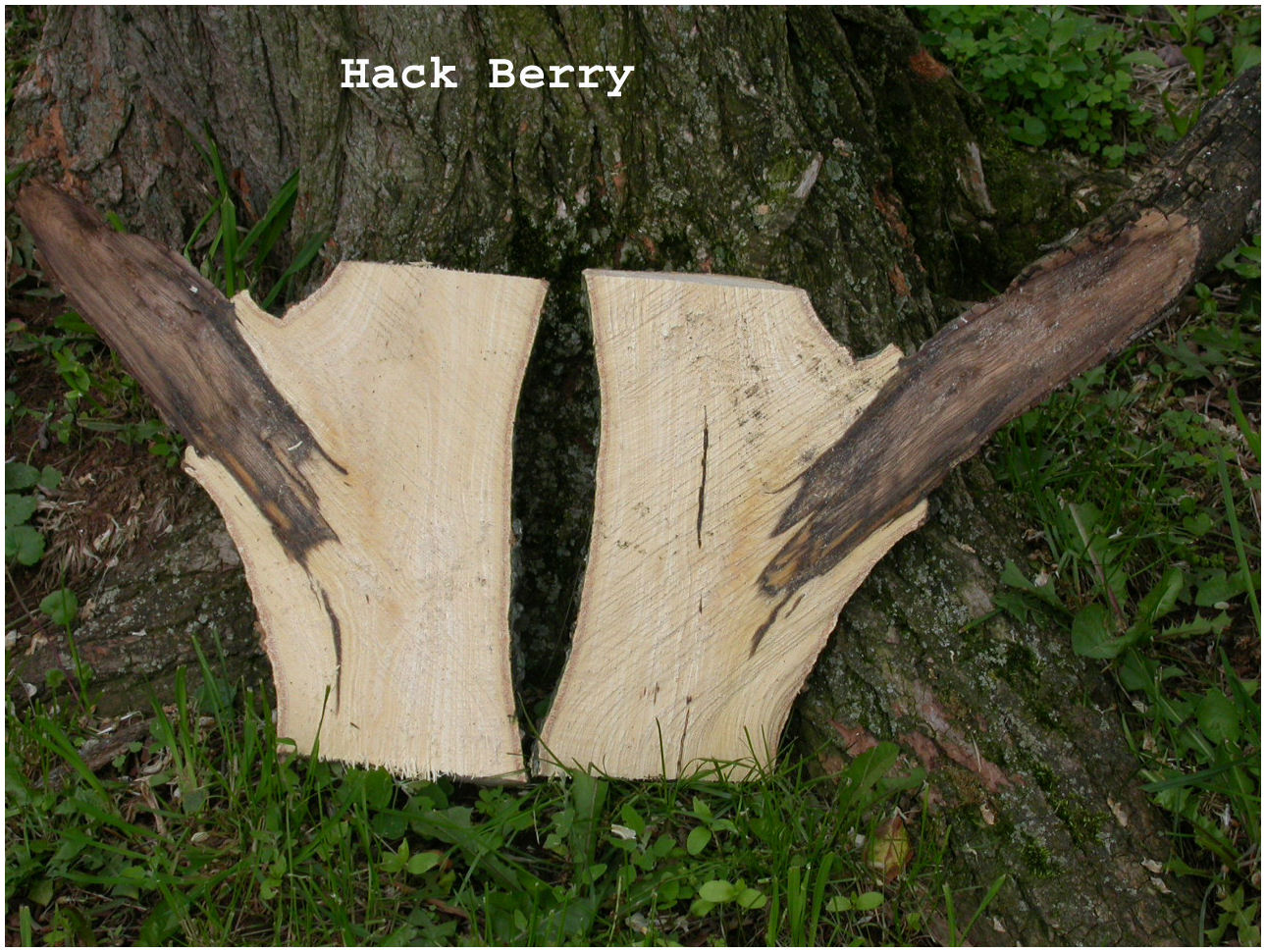
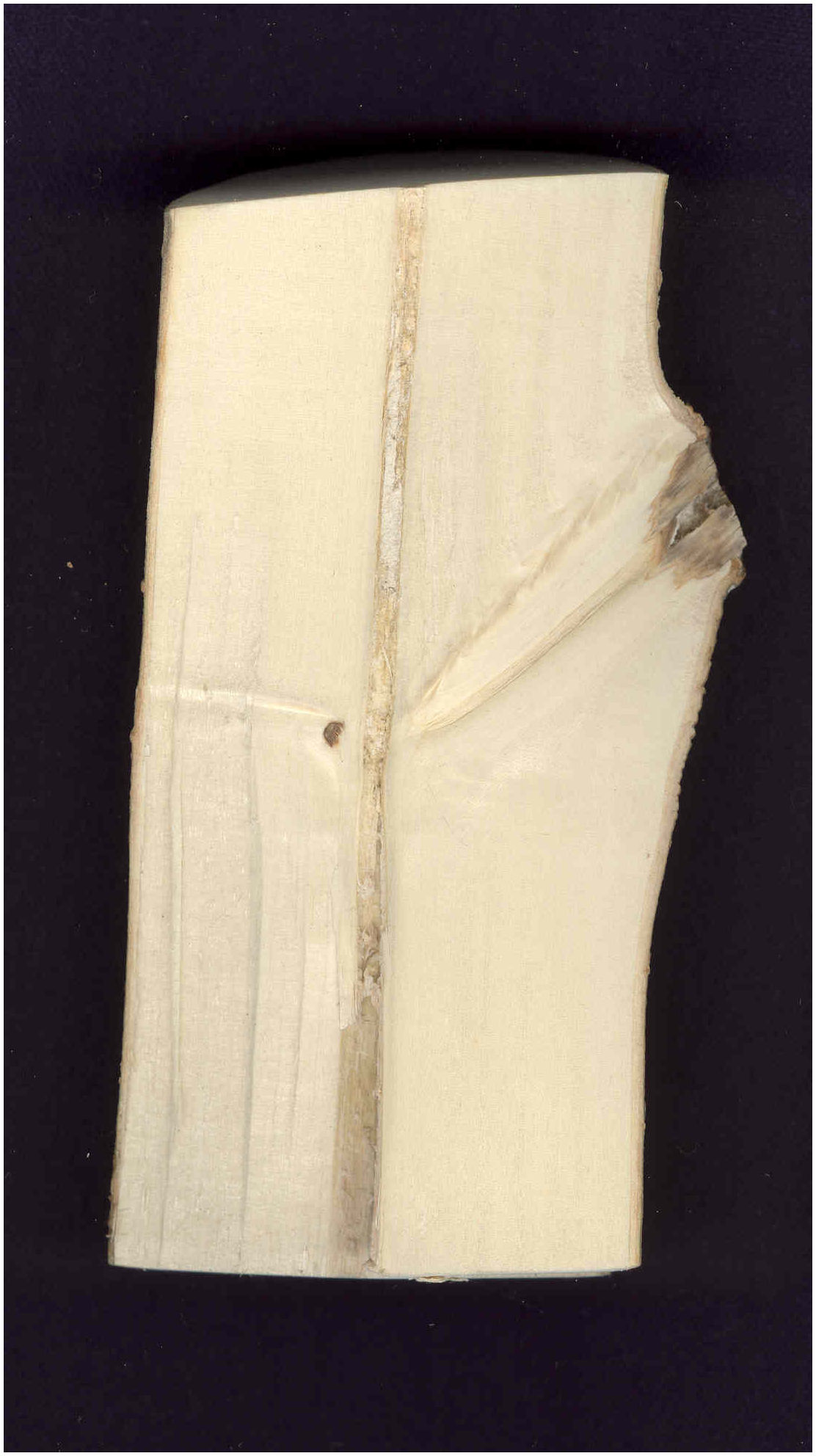
Ohio Buckeye
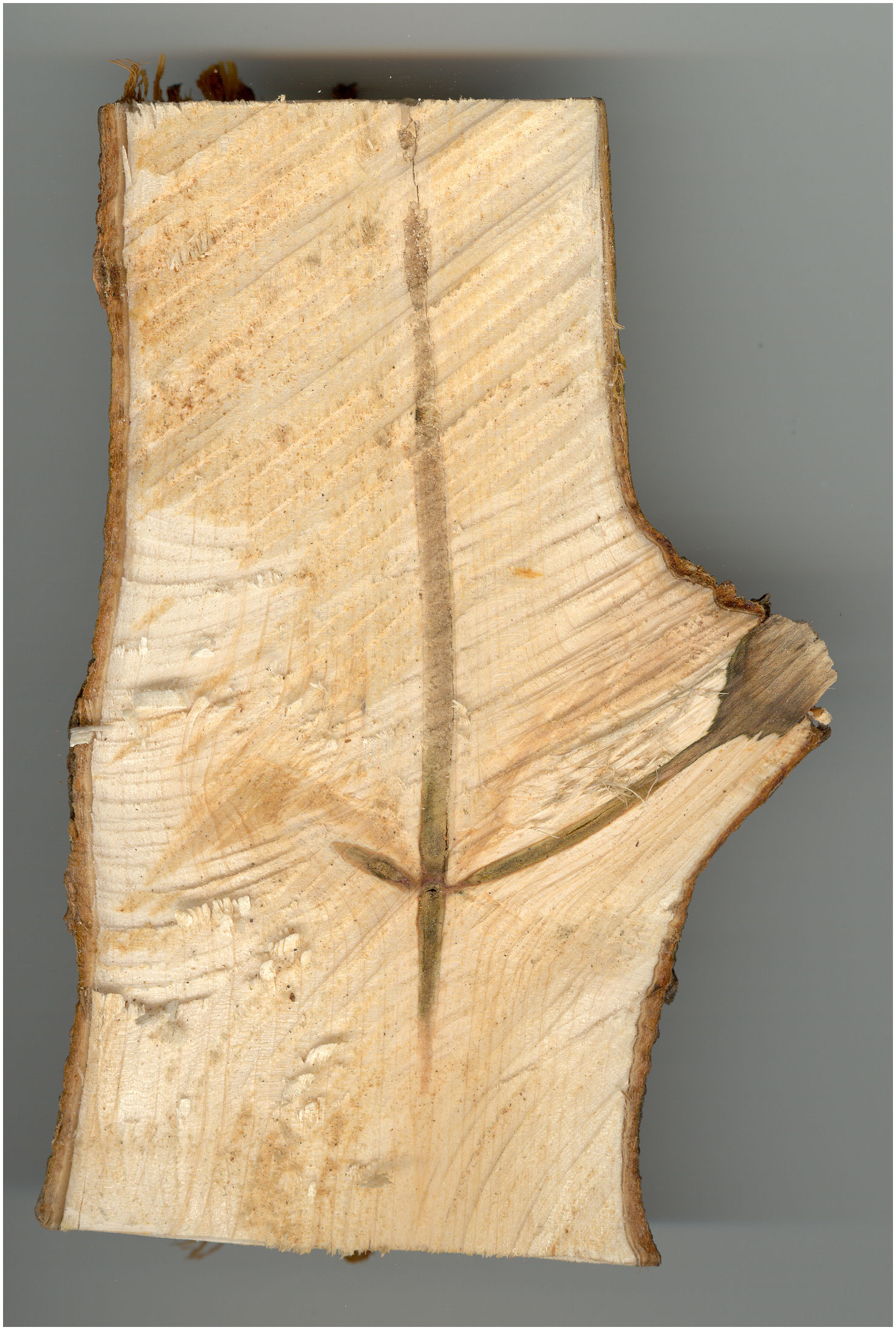
Norway Maple
Dictionary MAIN
PAGE
Text & Graphics Copyright © 2007
Keslick & Son Modern Arboriculture
Please report web site problems, comments and words of interest,
not found.
Contact